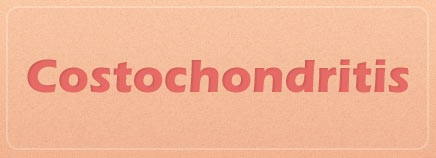
When a child complains of chest pain, it can be enough to send any parent into a panic: “Could it be a heart attack?”
Fortunately, the answer usually is no. Heart attacks are extremely rare in children. More often than not, chest pain in a child or teen is due to a harmless condition called costochondritis.
About Costochondritis
Costochondritis (kos-tuh-kon-DRY-tis) is a painful inflammation (swelling) of the cartilage that attaches the ribs to the breastbone (sternum). It’s one of the most common causes of chest pain in kids and teens, with girls having it more often than boys.
The breastbone is the hard bone you can feel in the center of your chest, running from the bottom of the neck down toward the stomach. Your ribs are connected to your breastbone by rubbery cartilage at points called costosternal joints. One or more of the costosternal joints can be affected by costochondritis, and it’s in these joints that the pain is felt. Because of this, costochondritis is sometimes referred to as chest wall pain or costosternal syndrome.
Costochondritis can cause a sharp, stabbing pain that might make you think it’s a heart attack or other heart condition, but that’s rarely the case. Usually, it’s harmless and goes away on its own after 2 or 3 days. Sometimes, though, it lasts longer — from several weeks to months.
Causes
Doctors often can’t pinpoint the exact cause of costochondritis, but sometimes it’s linked to:
- an injury to the ribs or breastbone
- physical strain due to heavy lifting or strenuous exercise
- repeated coughing (as can happen with some infections)
Symptoms
The main symptoms of costochondritis are pain and soreness in the chest. A sharp pain is usually felt on the left side of the breastbone, but it’s possible to feel it on both sides of the chest. The pain can get worse when a child takes deep breaths, coughs, moves the upper body or presses on the affected area. It may decrease a little when a child stops moving or takes shallower breaths, but in general it won’t go away entirely.
Although a heart attack is rarely the cause of chest pain in kids, it helps to know how costochondritis pain differs from heart attack pain:
- Heart attack pain is usually more widespread and felt in other body parts, like the arms and neck. It also feels as if it’s coming from under the breastbone.
- Costochondritis pain is usually only felt in a small area of the chest and feels as if it’s coming directly from where the breastbone meets the ribs.
Diagnosis
If your child has chest pain that doesn’t go away, call your doctor or go to a hospital emergency room. Chest pain is rarely a sign of something serious in kids, but sometimes it can be an emergency that needs immediate medical attention.
To diagnose costochondritis, the doctor will ask your child questions about the symptoms and will feel for tenderness along the area where the breastbone meets the ribs. Although it’s not possible to see costochondritis on a chest X-ray, the doctor may order one to rule out other possible causes of chest pain, such as pneumonia.
Treatment
Costochondritis usually goes away on its own without any treatment within a few days or weeks. If you’re concerned about pain that’s not going away, talk to your doctor.
In the meantime, the doctor will probably recommend giving your child over-the-counter pain medicines like ibuprofen or naproxen to help ease symptoms. Applying a warm compress or a heating pad (set on low) to the sore area also may give some relief.
Until your child feels better, make sure he or she gets plenty of rest and avoids any activities that make the pain worse.
Prevention
Since it’s not always clear what causes costochondritis, it’s not possible to prevent it. But you can help your kids avoid it.
First, identify and correct activities that can cause this kind of pain in kids. Costochondritis often is caused by heavy lifting — such as carrying an overstuffed backpack, especially on just one shoulder, which many kids do. If your child has to carry lots of books to and from school, buy a supportive backpack that spreads weight evenly over both shoulders and make sure it’s worn over both shoulders.

